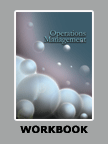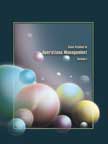McDonald's Food Chain
|
ICMR HOME | Case Studies Collection
» Operations Case Studies 

Custom Search
Please note: |
||||||||
|
"Our growth plan for the next three years is more a function of getting our logistics and cold chain right rather than going to far off places." - Amit Jetia, managing director, McDonald's India, Mumbai Joint Venture, in 2000. IntroductionIt was early evening and one of the 25 McDonald's outlets in India was bustling with activity with hungry souls trooping in all the time. No matter what one ordered - a hot Maharaja Mac or an apple pie - the very best was served every time. Around the world (including India), approximately 85% of McDonald's restaurants were owned and operated by independent franchisees. Yet, McDonald's was able to run the show seamlessly by outsourcing nine different ingredients used in making a burger from over 35 suppliers spread all over India through a massive value chain.
McDonald's Food Chain - Next Page>>

Custom Search
1] A cold chain refers to the warehousing, transportation and retailing of products under controlled temperatures. Such a chain is necessary for ice creams, frozen vegetables, processed meats, dairy and bakery products. While frozen foods need sub-zero temperatures up to -20°C, products like butter, which require chilling, need about 0-4°C. |
Case Studies Links:-
Case Studies,
Short Case Studies,
Simplified Case Studies.
Other Case Studies:-
Multimedia Case Studies,
Cases in Other Languages.
Business Reports Link:-
Business Reports.
Books:-
Text Books,
Work Books,
Case Study Volumes.







